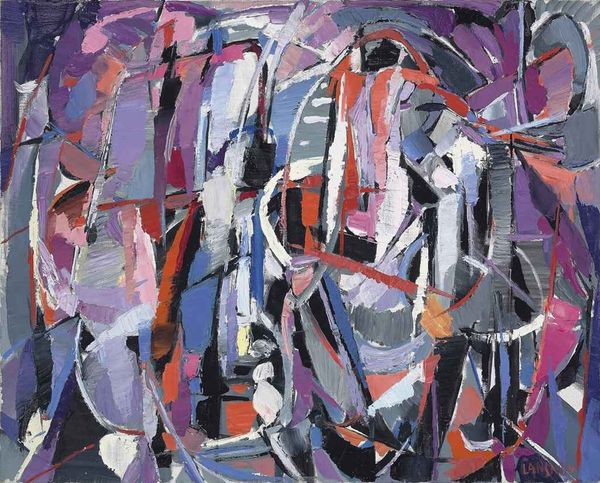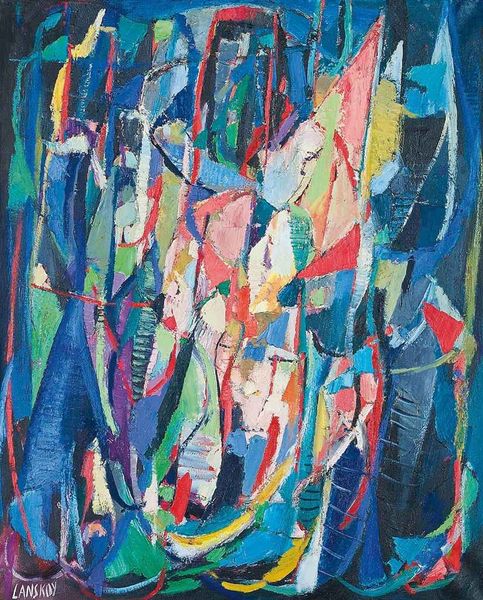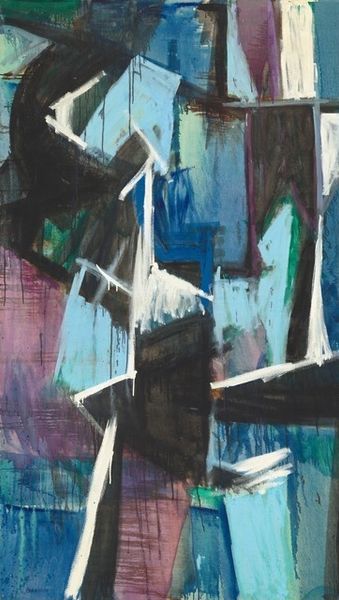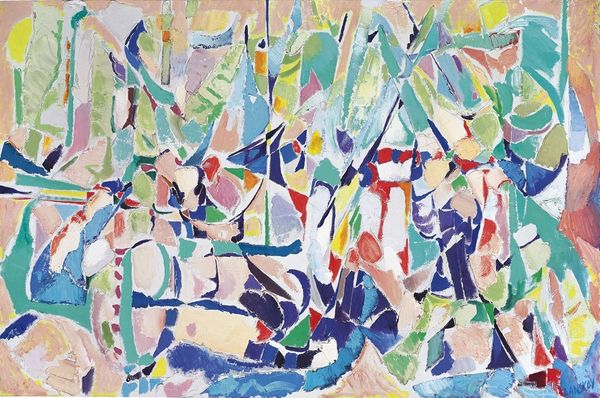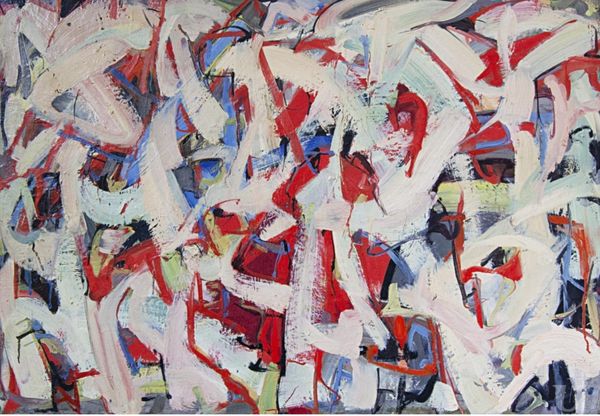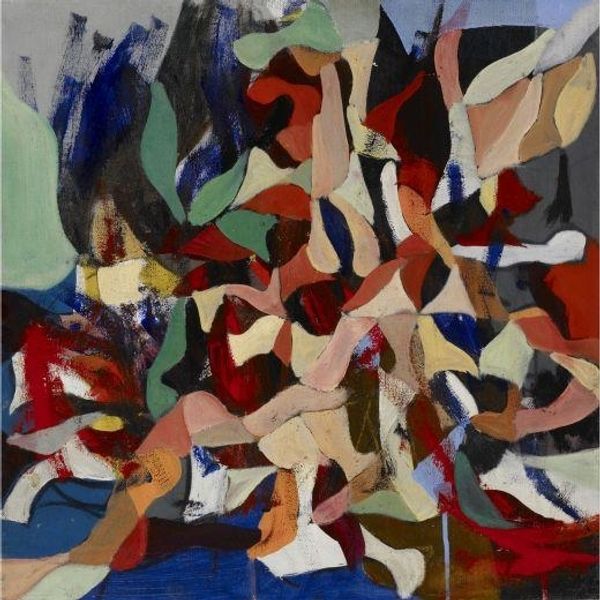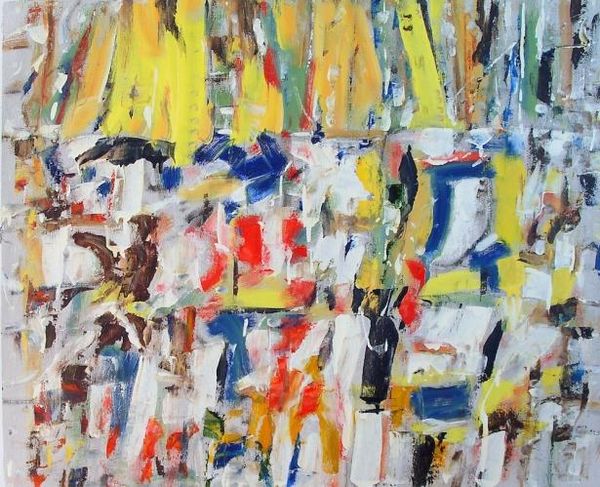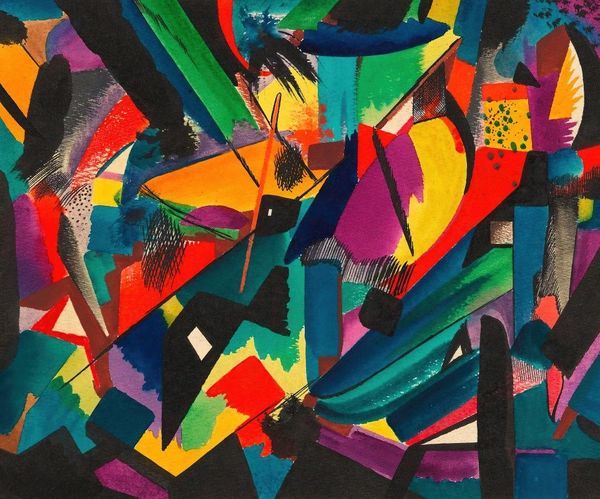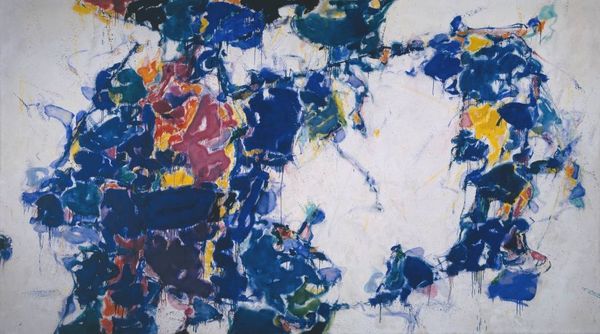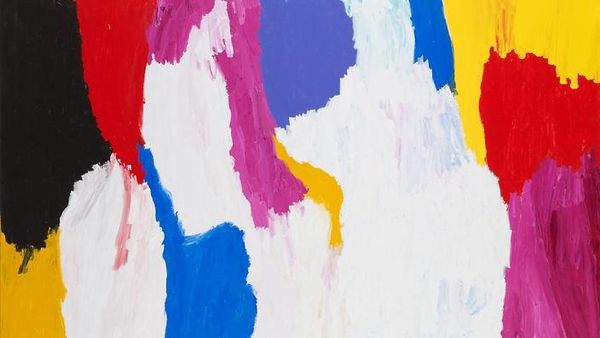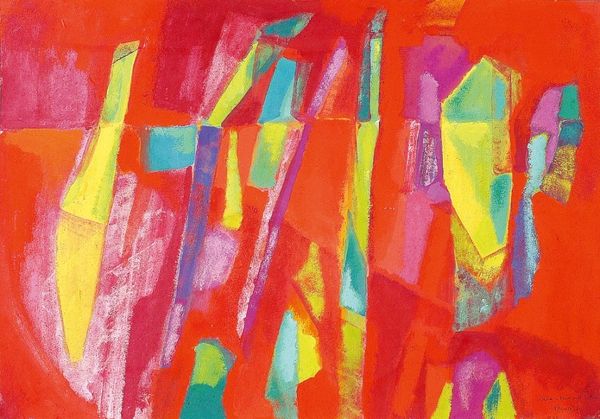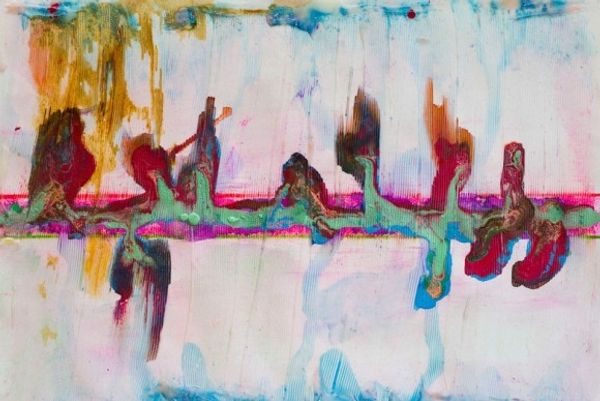
acrylic-paint, gestural-painting
#
abstract-expressionism
#
abstract expressionism
#
abstract painting
#
landscape
#
acrylic-paint
#
gestural-painting
#
acrylic on canvas
#
abstraction
#
modernism
Copyright: Andre Lanskoy,Fair Use
Curator: Looking at Andre Lanskoy's 1959 piece, "Sonate jouée à 5h du matin," or "Sonata Played at 5 AM," you see this beautiful convergence of color, light, and abstract expression. What are your initial thoughts? Editor: It strikes me as vibrant, almost jarring. The palette—these blues, purples, pinks all vying for space—it feels like a visual cacophony that mirrors the disruptive energy one might feel at that early hour. It lacks that sense of harmony. Curator: It’s fascinating to interpret the feeling based on the supposed time, and the artist does appear to challenge our sense of balance and expectations with the deliberate asymmetry and bold color choices. As Abstract Expressionism often does, this disrupts a need to focus, and suggests something less tangible than waking up at 5 AM. The brushstrokes, you see, they're quite gestural, reflecting Lanskoy's internal state and relationship with form and hue rather than representing concrete reality. Editor: True, and understanding it through a political lens, I see echoes of post-war fragmentation and a search for new forms of expression beyond representational art. Perhaps that jarring nature, then, is a reaction to social and political upheaval. Abstraction, for some artists, was a political stance in itself, and perhaps a social refusal in a very representational era. Curator: Exactly! Abstraction itself became a powerful act. How does Lanskoy, positioning his work in 1959, take up space and speak back? I wonder about the title "Sonata Played at 5 AM," and I see the title and painting itself potentially suggesting moments of social connection experienced out of step with everyday life, during unusual hours. Who plays this Sonata, and for whom? How might queer moments and relationships form in unusual places at this time, such as early-morning gatherings in domestic spaces, away from judgmental eyes? Editor: I find myself circling back to the disruptive use of color and wondering how this canvas engages—or challenges—notions of public and private life, expectation, visibility, and cultural expression. Did galleries celebrate pieces like this immediately, or did it take some time? What was the discourse *around* abstraction at the time, and the type of abstraction being celebrated versus the ones being overlooked or excluded? Curator: The artwork speaks on many registers to so many experiences. Thank you for pointing that out, particularly the value judgements present in abstraction as a genre at this time! Editor: Always a pleasure.
Comments
No comments
Be the first to comment and join the conversation on the ultimate creative platform.
